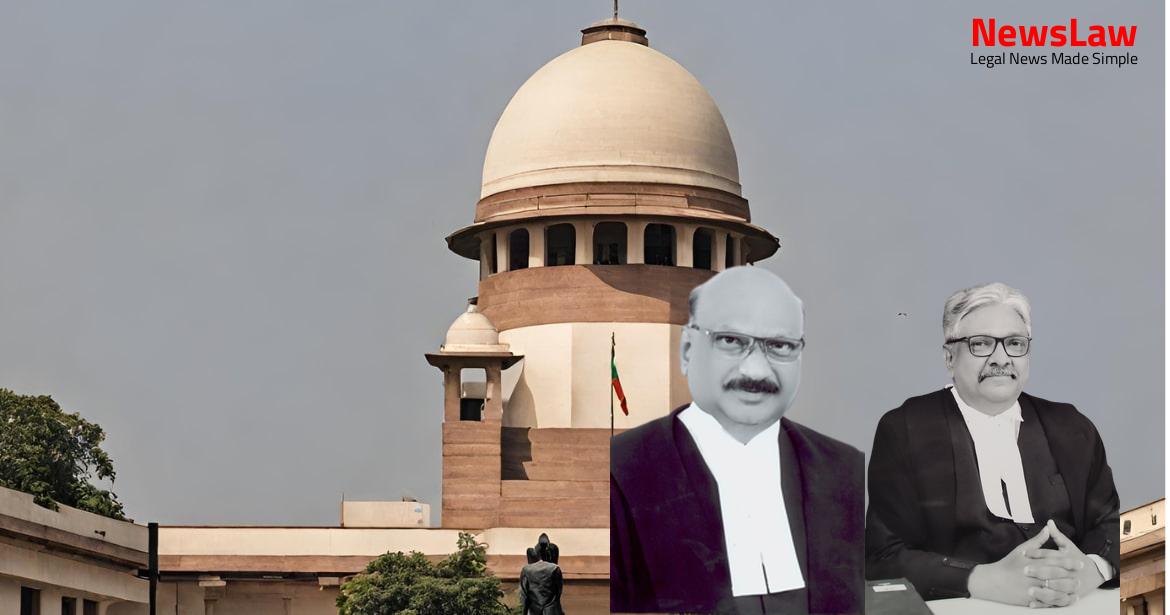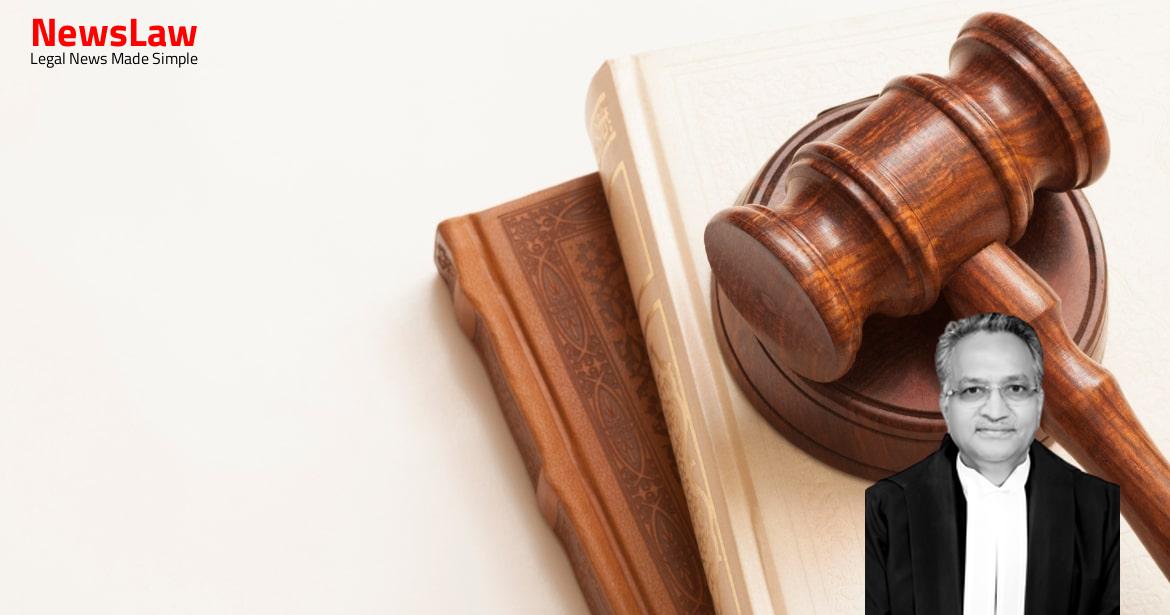Delve into the legal intricacies surrounding Section 364A in kidnapping cases, where the court’s analysis plays a pivotal role in determining the outcome. This summary highlights the importance of fulfilling specific conditions, the interpretation of conjunctions like ‘and’ and ‘or,’ and the necessity of proving threats of death or harm in such cases. Stay tuned to unravel the complexities of legal judgments and their implications in ensuring justice is served.
Facts
- PW-1 was trying to handover the ransom to the accused when the police surrounded and took the accused into custody.
- PW-1 conveyed his inability to pay the ransom amount, after which the accused demanded Rs. 1.50 lakhs for the release of PW-2.
- The accused took PW-2 to an unknown route under the guise of a shortcut and promised to call PW-1 for the correct address.
- Accused allegedly took PW-2 to the house of his sister and demanded a ransom of Rs. 2 lakhs for his release.
- Victim, PW-2, a student at St. Mary’s High School, was taken by the accused in an Auto from his sister’s house.
- PW-2 was kidnapped by the accused and ransom of Rs.2 lakhs was demanded from PW-1.
- The trial court convicted the appellant for offences under Sections 365 read with 120-B, 343 read with 120-B, and 346 read with 120-B, which was affirmed by the High Court.
- The appellant was acquitted for the offence punishable under Section 364-A.
- The High Court in an appeal set aside the acquittal for the offence under Sections 364-A read with 120-B, convicting her for the offence under Section 364A.
- The High Court sentenced the appellant to life imprisonment for the offence under Section 364A.
- The appeal challenging the conviction was dismissed by the High Court.
- The High Court affirmed the death sentence to life imprisonment for the offence under Section 364A and imposed a fine of Rs.5,000.
- This Court approved the acquittal of Suman Sood by the trial court and set aside the High Court’s conviction.
- The trial court’s findings indicated a lack of evidence against Suman Sood’s involvement in pressurize tactics or terrorizing the victim or his family members, leading to the acquittal.
- The case exemplifies that all conditions as enumerated in Section 364A must be fulfilled for a conviction.
- In the case of Vishwanath Gupta Vs. State of Uttaranchal, the Supreme Court discussed the ingredients of Section 364A regarding kidnapping, detention, threats, ransom, and causing death, emphasizing the need for all conditions to be met for a conviction.
- The trial court convicted the accused for the offence under Section 364A, which was upheld by the High Court beyond all reasonable doubt.
Also Read: Judicial Review on Conviction and Sentencing in Traffic Accident Case
Issue
- The learned Sessions Judge and the High Court did not record any finding that all ingredients of Section 364A were proved by the prosecution.
Also Read: Analysis of Compromise Decree Validity in Property Dispute Case
Arguments
- The defence counsel argued that the prosecution evidence is insufficient to establish the guilt of the accused for the charge.
- It was contended that there was no evidence or findings supporting any threat extended by the accused towards causing death or hurt to the victim.
- Neither the Sessions Judge nor the High Court considered the essential conditions for conviction under Section 364A.
- The victim’s statement (PW-2) mentioned that he was treated well by the accused.
- The respondent is not the real culprit.
- A false case was foisted against him.
Analysis
- Section 364A of the Indian Penal Code deals with kidnapping for ransom
- The section includes the following essential conditions for the offense:
- 1. Kidnapping or abduction of a person
- 2. Threatening to cause death or hurt to the victim or creating a reasonable apprehension of such harm
- 3. Causing hurt or death to the victim to compel certain actions
- The section outlines the punishment for such offenses as imprisonment for life or death penalty
- The Law Commission of India proposed specific amendments to Section 364A
- The Court discussed the various conditions and elements necessary to prove the offense under Section 364A
- The Court emphasized the seriousness of cases involving kidnapping for ransom, especially when the victim is a child
- The judgement extensively discusses the three stages of Section 364A – kidnapping or abduction, threat of death with a demand for money, and causing death if the demand is not met.
- The use of ‘and’ and ‘or’ in the conditions of Section 364A is crucial, each serving a different purpose and requirement.
- The second condition of Section 364A, which involves the threat of causing death or hurt, must be proven for conviction under this section.
- The obligation to fulfill both conditions of Section 364A before conviction is emphasized throughout the analysis.
- The judgment clarifies that the lack of fulfillment in the second condition as per the evidence presented renders the conviction under Section 364A unsustainable.
- Different interpretations of the conjunction ‘and’ and ‘or’ in the legal context play a vital role in determining the applicability of the law.
- The court’s consideration of evidence, facts, and fulfillment of specific conditions is paramount in deciding the outcome of a case under Section 364A.
- The offence in the case took place at three locations: Haldwani, Nainital, Lucknow, and Unnao.
- The court discussed the interpretation of ‘and’ and ‘or’ in the legal context of the case.
- The judgement in Vikram Singh vs. Union of India outlined the requirements under Section 364 and 364A for the commission of an offence.
- The Hyderabad Asbestos Cement Products case identified the three distinct components of Section 364A.
- The case of Arvind Singh vs. State of Maharashtra emphasized the need to prove kidnapping, detention, and ransom demand under Section 364A.
- The Anil alias Raju Namdev Patil case highlighted the necessity to prove threats of death or hurt to the victim under Section 364-A.
- The court cited Crawford on Interpretation of Law regarding the interpretation of ‘disjunctive’ and ‘conjunctive’ words in criminal statutes.
- References to other judgements where ‘and’ has been used in conjunction were also made.
- The Malleshi case emphasized the inherent threat of death in kidnapping cases leading to a conviction under Section 364A.
- The appellant is convicted under Section 363 for the offence of kidnapping
- Kidnapping for ransom and demand for ransom have been proven
- Conviction under Section 364A is unsustainable as the second condition was not proved
- The offence of kidnapping has been fully established
- The conviction of the appellant under Section 364A is set aside
Decision
- The appellant is convicted under section 363 for kidnapping and sentenced to seven years of imprisonment and a fine of Rs. 5,000.
- After completing the seven years of imprisonment, the appellant shall be released.
- The appeal is partly allowed to the extent of modifying the sentence to seven years of imprisonment and a fine of Rs. 5,000.
- Section 363 provides for a maximum punishment of seven years of imprisonment and a fine.
- The conviction and sentence of the appellant under Section 364A are set aside.
Case Title: SHAIK AHMED Vs. STATE OF TELANGANA (2021 INSC 308)
Case Number: Crl.A. No.-000533-000533 / 2021



